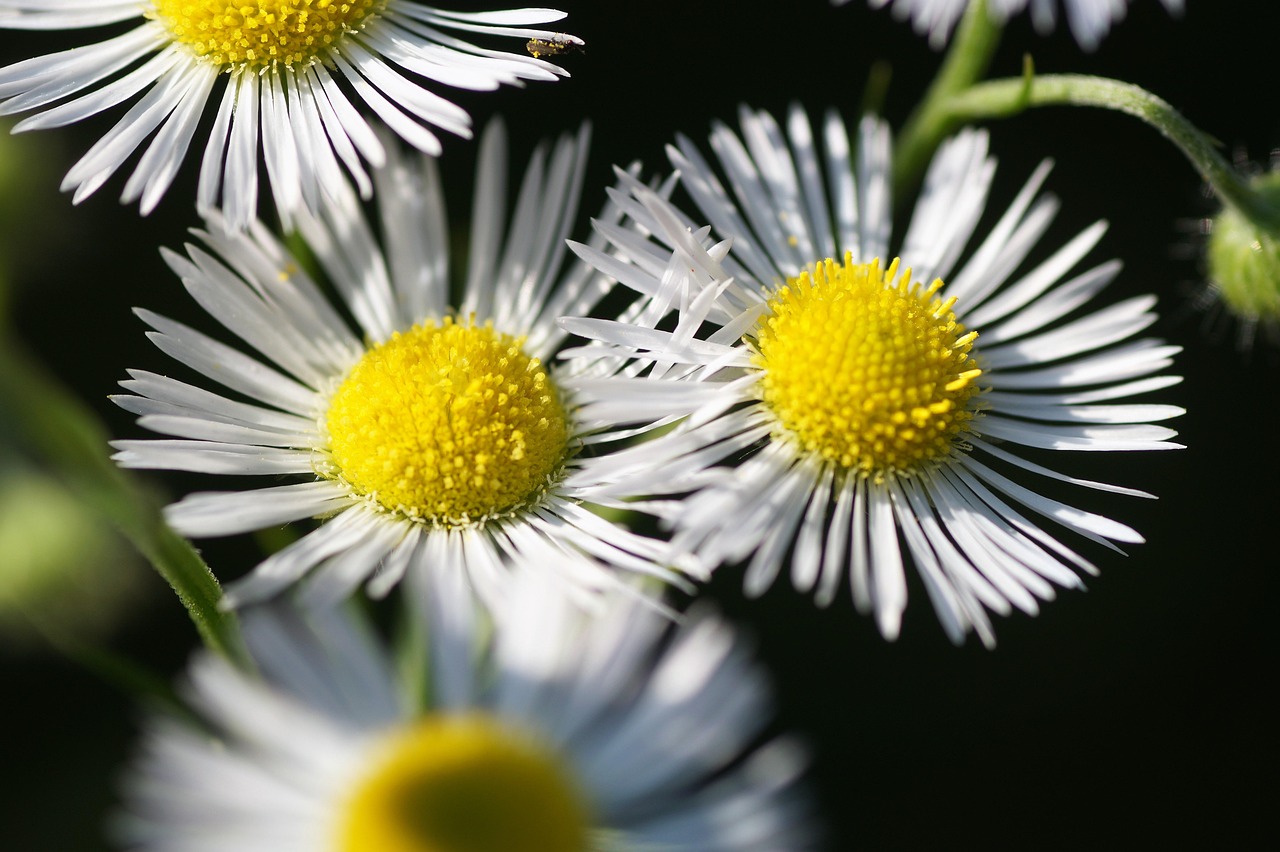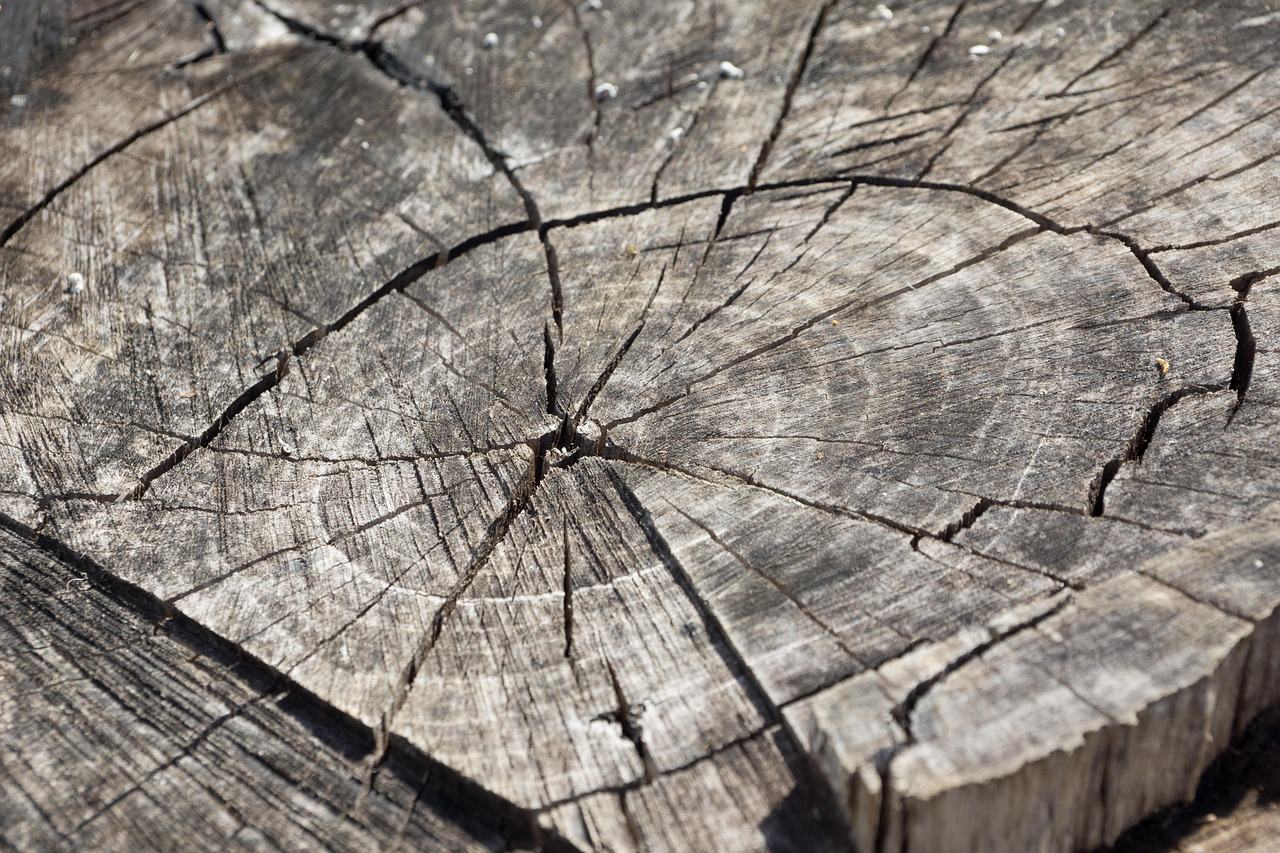Choosing deer-resistant annuals can significantly enhance your landscape by ensuring that your flowers thrive without being eaten by deer. These plants not only add color and beauty to your garden but also provide a pest-free environment, allowing you to enjoy your outdoor spaces without concern.
Understanding Deer-Resistant Annuals

Deer are known for their voracious appetites, often causing havoc in gardens and landscapes. They tend to gravitate towards certain plants, leading to frustration for gardeners. By selecting deer-resistant annuals, you can create a vibrant garden that is less appealing to these animals. Understanding which plants deer typically avoid is crucial for maintaining a flourishing landscape.
Annuals are plants that complete their life cycle in one growing season. They are popular choices for landscaping because of their ability to provide continuous color and bloom throughout the warm months. However, not all annuals are created equal when it comes to resisting deer. Some possess characteristics that make them unpalatable or even toxic to these animals.
Characteristics of Deer-Resistant Plants
Several traits make certain annuals less appealing to deer. These include:
- Strong Fragrance: Many deer-resistant plants have a strong aroma that deters deer. Scents like mint, sage, and rosemary are often uninviting to them.
- Texture: Fuzzy or spiky leaves can make plants less palatable. Deer tend to avoid plants with rough textures.
- Toxicity: Some plants contain compounds that are toxic or unappetizing to deer, discouraging them from eating them.
- Color: Brightly colored flowers may attract other pollinators but can also signal danger to deer if they associate those colors with toxicity.
Popular Deer-Resistant Annuals
Here is a selection of popular deer-resistant annuals that can enhance your garden while keeping deer at bay:
| Plant Name | Description | Bloom Time |
|---|---|---|
| Marigold | Bright orange and yellow flowers that repel pests. | Late spring to frost |
| Zinnia | Vibrant blooms that attract butterflies but resist deer. | Summer to frost |
| Snapdragon | Tall spires of colorful flowers that are unappealing to deer. | Spring to summer |
| Petunia | Available in a variety of colors; resistant due to their texture. | Spring to frost |
These deer-resistant annuals not only beautify your garden but also create an environment where deer are less likely to roam. Incorporating these plants into your landscape can reduce the risk of damage from these pests while still allowing you to enjoy a colorful and thriving garden.
Creating a Pest-Free Landscape
Designing a landscape that minimizes deer visits requires more than just selecting the right plants. It involves creating an environment that is less attractive to deer while promoting the health of your chosen annuals. Here are some strategies to consider:
- Plant Selection: Choose a mix of deer-resistant annuals and perennials for varied texture and color.
- Placement: Arrange your plants strategically. Grouping deer-resistant species together can enhance their effectiveness in deterring browsing.
- Physical Barriers: Use fences or nets as additional deterrents if deer are particularly persistent in your area.
- Companion Planting: Pairing deer-resistant plants with herbs or other strong-scented flowers can further discourage deer.
By implementing these strategies alongside your choice of deer-resistant annuals, you can cultivate a landscape that remains vibrant and beautiful throughout the growing season, free from the threat of deer damage.
Choosing the Right Deer-Resistant Annuals
Selecting the right deer-resistant annuals is essential for creating a successful and colorful garden. Different species thrive in various climates and soil types, making it important to consider local conditions when choosing your plants. Additionally, understanding plant characteristics can help you make informed decisions about which flowers will work best in your landscape.
Factors to Consider When Selecting Annuals
When choosing deer-resistant annuals, several factors can influence your selection:
- Climate: Annuals may perform differently based on climate zones. Research plants that are suitable for your area.
- Soil Type: Assess your soil quality. Some plants prefer well-drained soils, while others thrive in moisture-retentive conditions.
- Sunlight Exposure: Determine the sunlight requirements of each plant. Some annuals flourish in full sun, while others prefer partial shade.
- Height and Spread: Consider the mature size of each plant to ensure proper spacing and arrangement in your garden.
Popular Deer-Resistant Annual Varieties
Below are some notable deer-resistant annuals that can add beauty and color to your landscape:
- Ageratum: This plant produces fluffy blue or purple flowers and thrives in sunny areas. It attracts pollinators while remaining unappealing to deer.
- Celosia: Known for its unique, feathery blooms, celosia comes in vibrant colors. Its tough texture makes it less attractive to browsing deer.
- Dusty Miller: With its silvery foliage, dusty miller adds a striking contrast to colorful blooms. Deer tend to avoid its strong scent and texture.
- Lantana: This hardy plant features clusters of small flowers in various colors. Its aromatic foliage helps deter deer while attracting butterflies.
- Nasturtium: Both edible and beautiful, nasturtiums have peppery leaves and bright flowers. Their flavor is unappealing to deer.
Planting and Maintenance Tips
To ensure your deer-resistant annuals thrive, follow these planting and maintenance tips:
- Soil Preparation: Before planting, enrich your soil with compost or organic matter to improve drainage and nutrient levels.
- Watering: Consistent watering is key during the establishment phase. Once established, many deer-resistant annuals are more drought-tolerant.
- Mulching: Apply a layer of mulch to retain moisture and suppress weeds. This practice also makes your garden less inviting to deer.
- Deadheading: Regularly remove spent flowers to encourage continuous blooming and maintain a neat appearance in your garden.
Creating Companionship in Your Landscape
Companion planting involves pairing plants that benefit each other, enhancing growth and deterring pests like deer. By strategically combining deer-resistant annuals with specific companions, you can create a thriving ecosystem in your garden.
Effective Companion Plants
Here are some effective combinations of deer-resistant annuals and companion plants:
- Zinnias with Basil: Zinnias attract beneficial insects, while basil repels pests. Together, they create an inviting environment for pollinators.
- Ageratum with Marigolds: Ageratum provides a lush backdrop for marigolds, which help deter harmful insects and add vibrant color.
- Nasturtium with Cabbage: Nasturtiums can help repel aphids from cabbage plants while providing edible flowers for salads.
- Lantana with Salvia: Both are drought-tolerant and attract butterflies while repelling deer due to their strong scents.
The Role of Scent in Plant Selection
Scent plays a crucial role in deterring deer from gardens. Many deer-resistant annuals have strong aromas that are off-putting to these animals. Incorporating fragrant herbs alongside your flowers can enhance this effect.

Consider including the following aromatic herbs with your annuals:
- Rosemary: Its strong scent makes it less appealing to deer while adding culinary value.
- Sage: This herb not only deters deer but also attracts pollinators, enriching your garden’s biodiversity.
- Mint: While it can be invasive, mint’s aroma is effective at keeping deer away from surrounding plants.
By carefully selecting your plants and utilizing companion planting strategies, you can create a diverse and beautiful landscape that thrives without the threat of deer damage. The combination of color, scent, and texture will make your garden a delightful place for you and beneficial wildlife alike.
Designing Your Deer-Resistant Landscape

Designing a landscape that incorporates deer-resistant annuals requires a thoughtful approach. Not only should you consider the aesthetic appeal, but also how your plant choices fit into the overall ecosystem of your garden. By focusing on structure, color, and seasonal interest, you can create a stunning outdoor space that remains less attractive to deer.
Establishing Garden Structure
The structure of your garden plays a significant role in how it looks and functions. Consider incorporating various layers of plants to create dimension and interest. Here are some strategies for establishing garden structure:
- Layering: Use taller plants at the back or center of beds, with shorter plants in the front. This allows for visibility and better access to sunlight.
- Grouping: Plant in clusters rather than single specimens. Grouping similar plants together can create visual impact and make your garden feel fuller.
- Paths and Borders: Create defined paths using stones, mulch, or gravel. Borders can be established with low-growing deer-resistant plants to frame your garden.
- Vertical Elements: Incorporate trellises, arbors, or garden sculptures to draw the eye upwards and add vertical interest.
Selecting a Color Palette
A well-thought-out color palette can enhance the beauty of your landscape while creating a harmonious environment. Consider the following tips for selecting colors:
- Complementary Colors: Choose colors that enhance each other. For example, pairing yellow marigolds with purple zinnias creates a vibrant contrast.
- Seasonal Interest: Select annuals that bloom at different times to ensure color throughout the growing season. This keeps your landscape lively and engaging.
- Texture Variation: Incorporate plants with different leaf textures and shapes. This adds depth and intrigue to your garden design.
Incorporating Seasonal Interest
To maintain visual appeal throughout the year, it’s important to consider how your annuals will perform across seasons. While annuals typically provide summer blooms, pairing them with perennials can extend the color palette into fall and even winter. Here are some strategies for integrating seasonal interest:
- Early Bloomers: Include early-blooming annuals like pansies or snapdragons that will bring color before perennials start blooming.
- Late Summer Blooms: Select varieties like cosmos or sunflowers that will continue to thrive into late summer and early fall.
- Foliage Plants: Consider incorporating annuals with striking foliage, such as ornamental kale or colorful coleus, which can add interest even when flowers fade.
Understanding Deer Behavior and Preferences
Gaining insight into deer behavior can help you make strategic decisions regarding your plant choices. Understanding what attracts deer and what repels them is vital for maintaining a pest-free landscape.
What Attracts Deer
Deer are attracted to certain characteristics in plants. These include:
- Tender Leaves: Young, tender foliage is highly appealing to deer. They often seek out soft, nutritious greens.
- Sweet Scents: Some sweet-smelling flowers and herbs can draw deer closer. Be cautious when selecting fragrant plants.
- High Nutritional Value: Plants rich in moisture and nutrients are preferred by deer. They tend to gravitate toward lush gardens.
What Repels Deer
In contrast, certain traits can help repel deer from your garden:
- Bitter or Strong Flavors: Plants with strong flavors, like herbs or those with bitter tastes, are less likely to be eaten by deer.
- Aromatic Foliage: Many herbs and aromatic plants emit scents that are unappealing to deer, making them excellent choices for deterrence.
- Cactus-like Textures: Spiky or thorny plants can discourage deer from browsing due to their uncomfortable textures.
The Importance of Plant Diversity
Diversity in plant selection not only enhances your garden’s aesthetic but also contributes to its resilience against deer damage. A varied landscape can confuse deer and reduce the likelihood of them targeting specific plants. Here are some benefits of plant diversity:
- Pest Control: A diverse array of plants can attract beneficial insects that naturally control pest populations.
- Ecosystem Health: Diverse gardens support a wider range of wildlife, contributing to a healthier ecosystem overall.
- Visual Appeal: A mix of colors, textures, and heights creates a visually dynamic landscape that is pleasing to the eye.
By understanding deer behavior and preferences while designing a diverse and visually appealing landscape, you can effectively reduce the chances of deer damage while enjoying a beautiful array of flowers. Your garden can become a thriving environment that showcases both beauty and resilience against pests.
Maintaining Your Deer-Resistant Garden

Once you have established your deer-resistant garden, ongoing maintenance is crucial to ensure its success. Regular care will not only keep your plants healthy but also enhance their effectiveness in deterring deer. Here are important maintenance practices to consider:
Regular Inspection
Routine checks of your garden are essential. Look for signs of deer activity, such as tracks or nibbling on plants. Early detection allows you to take action before damage occurs. Inspect your plants for health issues like pests or diseases, which can weaken them and make them more attractive to deer.
Seasonal Care
Different seasons bring unique challenges and care requirements:
- Spring: As new growth appears, provide adequate water and fertilization to support healthy development. Consider planting additional annuals for seasonal variety.
- Summer: Maintain consistent watering, especially during dry spells. Deadhead spent flowers to encourage continuous blooming and prevent plants from going to seed.
- Fall: Prepare your garden for winter by cutting back perennials and cleaning up fallen leaves. Mulch can help protect roots and retain moisture.
- Winter: Protect sensitive plants with mulch or frost cloths if necessary. Assess your garden layout and plan for any changes or additions in the upcoming growing season.
Utilizing Natural Deterrents
In addition to planting deer-resistant species, consider using natural deterrents to further protect your garden. Some effective options include:
- Human Hair: Spreading human hair around the garden can create a scent that deters deer, as they associate it with humans.
- Soap Shavings: Strongly scented soaps can also help keep deer at bay. Place shavings around the base of plants.
- Essential Oils: Spraying diluted essential oils such as peppermint or lavender can create an unwelcoming scent for deer.
Final Thoughts
Creating a deer-resistant landscape is a rewarding endeavor that combines beauty with practicality. By selecting the right annuals, implementing thoughtful design strategies, and maintaining your garden effectively, you can cultivate a vibrant outdoor space that minimizes the threat of deer damage. Understanding deer behavior and preferences empowers you to make informed decisions about plant selection and landscape design.
The key takeaways from this article include:
- Choosing a diverse range of deer-resistant annuals can enhance both aesthetic appeal and ecosystem health.
- Utilizing companion planting strategies can create beneficial relationships between plants, further deterring deer while attracting pollinators.
- Regular garden maintenance and seasonal care are critical for sustaining plant health and resistance to deer.
- Natural deterrents can complement your efforts in keeping deer away from your prized flowers.
Ultimately, a well-planned, diverse garden not only looks beautiful but also contributes to a healthier environment. By employing these strategies, you can enjoy a flourishing landscape that thrives without the worry of deer damage, allowing you to appreciate the beauty of nature in your own backyard.
